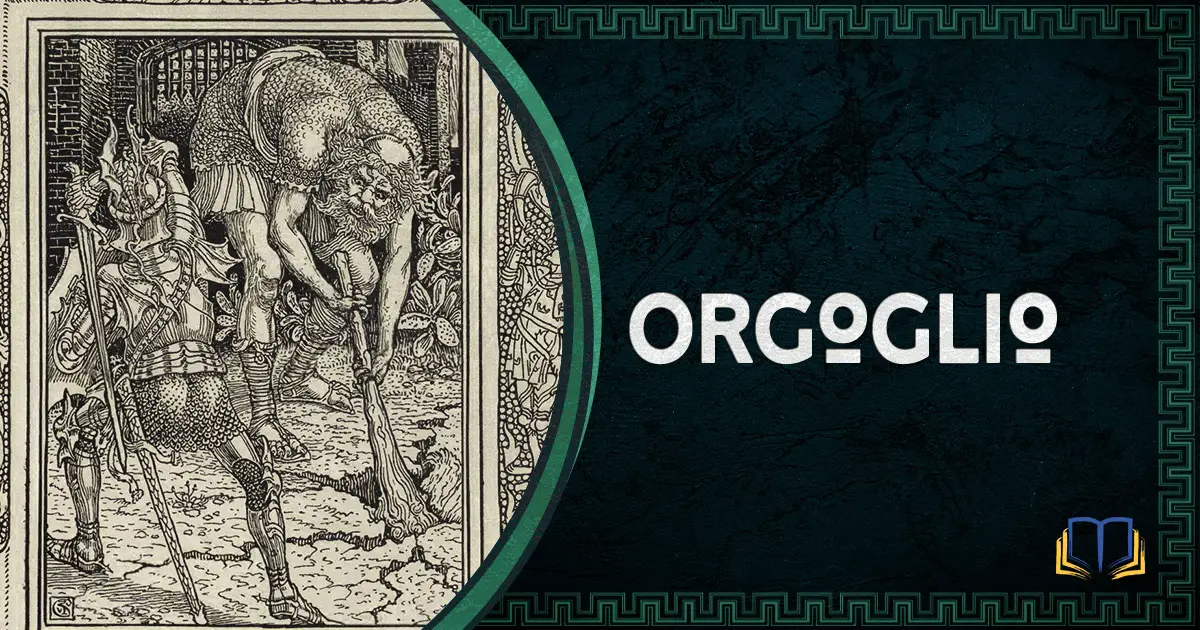Orgoglio is a giant from the first book of The Faerie Queene. He manages to imprison the Redcrosse knight, takes Duessa as his girlfriend, but is eventually defeated by Prince Arthur.
The passage in Canto 7 of book 1 is a major low point for the Redcrosse knight, because his infidelity with Duessa, and his overall lack of good choices in the first place, leads to his imprisonment in Orgoglio’s castle. The Redcrosse knight spends a long time there, potentially months, rotting away and dwelling on all the wrongs that he has done.
It’s no wonder that, shortly after this experience, he nearly kills himself when he encounters Despair.
What does Orgoglio’s name mean?
In Italian, the name means pride. You may notice a trend with other figures in book 1 of The Faerie Queene. Lucifera is the other prominent figure that represents pride.
Once again, Edmund Spenser is showing the negative consequence of prideful leadership and making major religious comparisons.
When Orgoglio gives Duessa a seven headed beast, these religious parallels grow even stronger, as Duessa now looks like the Mother of Abominations. The two make a terrifying pair, and represent all of the forces opposing the true church, represented by St. George and Una.
See our complete list of Arthurian characters for more entries like this one.
Arthurian Bibliography
- Norris Lacy, Geoffrey Ashe, Debra Mancoff – The Arthurian Handbook (Second Edition)
- Alan Lupack – The Oxford Guide to Arthurian Literature and Legend
- Ronan Coghlan – The Illustrated Encyclopaedia of Arthurian Legends
- Anonymous – Lancelot-Grail, the French Vulgate
- Sir Thomas Malory – Le Morte d’Arthur
See also my ever-expanding list of primary and secondary sources.



